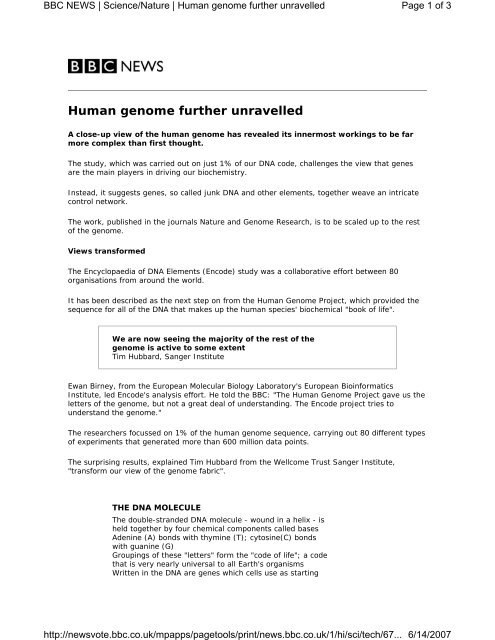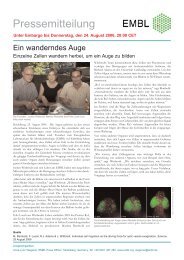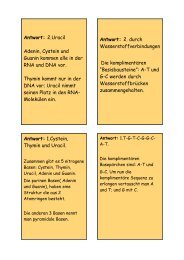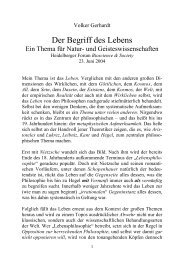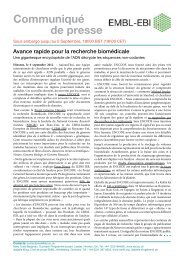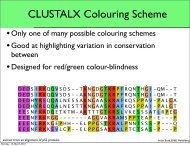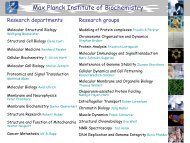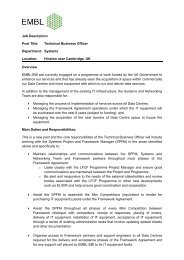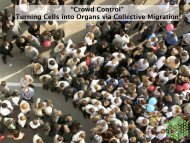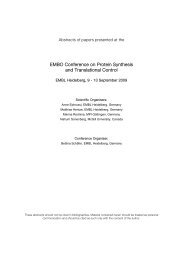Media Clips - EMBL
Media Clips - EMBL
Media Clips - EMBL
Create successful ePaper yourself
Turn your PDF publications into a flip-book with our unique Google optimized e-Paper software.
BBC NEWS | Science/Nature | Human genome further unravelled<br />
Human genome further unravelled<br />
A close-up view of the human genome has revealed its innermost workings to be far<br />
more complex than first thought.<br />
The study, which was carried out on just 1% of our DNA code, challenges the view that genes<br />
are the main players in driving our biochemistry.<br />
Instead, it suggests genes, so called junk DNA and other elements, together weave an intricate<br />
control network.<br />
The work, published in the journals Nature and Genome Research, is to be scaled up to the rest<br />
of the genome.<br />
Views transformed<br />
The Encyclopaedia of DNA Elements (Encode) study was a collaborative effort between 80<br />
organisations from around the world.<br />
It has been described as the next step on from the Human Genome Project, which provided the<br />
sequence for all of the DNA that makes up the human species' biochemical "book of life".<br />
We are now seeing the majority of the rest of the<br />
genome is active to some extent<br />
Tim Hubbard, Sanger Institute<br />
Ewan Birney, from the European Molecular Biology Laboratory's European Bioinformatics<br />
Institute, led Encode's analysis effort. He told the BBC: "The Human Genome Project gave us the<br />
letters of the genome, but not a great deal of understanding. The Encode project tries to<br />
understand the genome."<br />
The researchers focussed on 1% of the human genome sequence, carrying out 80 different types<br />
of experiments that generated more than 600 million data points.<br />
The surprising results, explained Tim Hubbard from the Wellcome Trust Sanger Institute,<br />
"transform our view of the genome fabric".<br />
THE DNA MOLECULE<br />
The double-stranded DNA molecule - wound in a helix - is<br />
held together by four chemical components called bases<br />
Adenine (A) bonds with thymine (T); cytosine(C) bonds<br />
with guanine (G)<br />
Groupings of these "letters" form the "code of life"; a code<br />
that is very nearly universal to all Earth's organisms<br />
Written in the DNA are genes which cells use as starting<br />
http://newsvote.bbc.co.uk/mpapps/pagetools/print/news.bbc.co.uk/1/hi/sci/tech/67...<br />
Page 1 of 3<br />
6/14/2007


